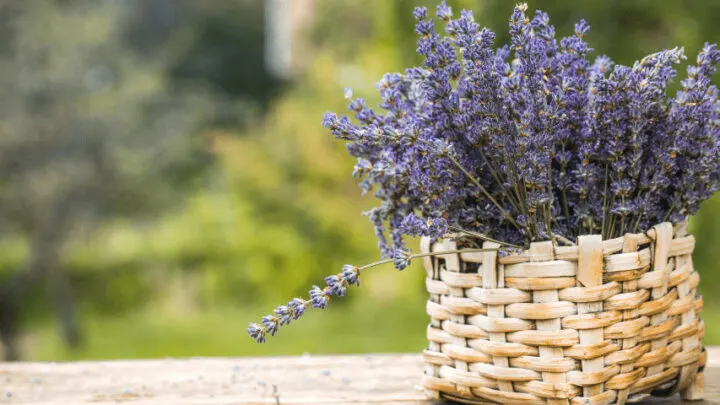Does your lavender plant look as though it’s dying? Don’t give up!
Reviving it may be just a matter of making a small change.
Table of Contents
How to Revive a Dying Lavender Plant
Lavender plants can be damaged by fungus, pests, overwatering, or incorrect conditions. If your plant is dying, you may need to treat it with a fungicide or wash it with insecticidal soap. Make sure the plant is getting enough direct sunlight and grows in a warm area. You can also revive a lavender plant by cutting away woody or leggy growth, or any rotten parts of the roots. Pay attention to the symptoms of your dying lavender plant and then use one of these tips to revive it.
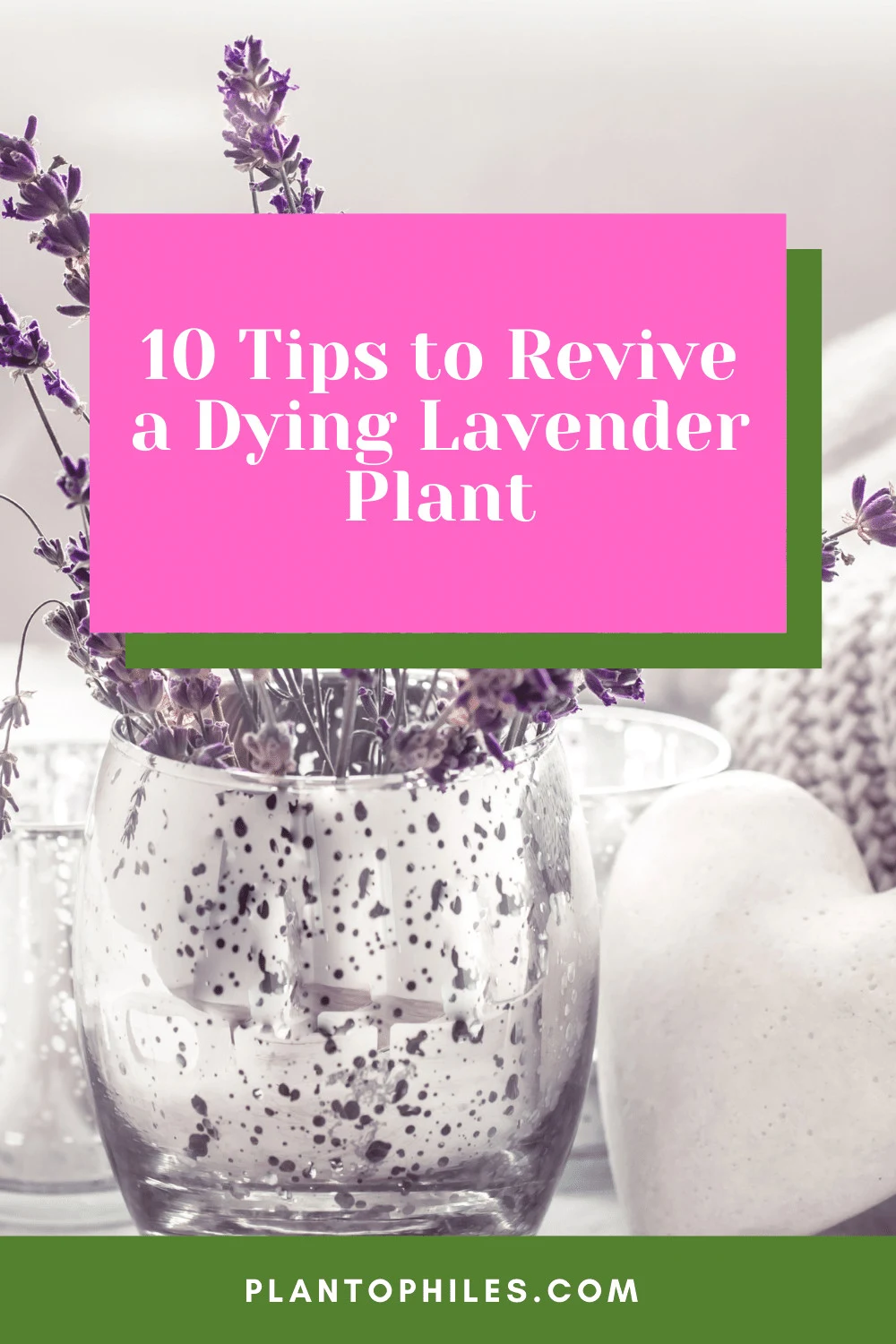
How to Revive a Dying Lavender Plant
10 Tips How to Revive a Dying Lavender Plant
1. Treat Shab disease
Shab disease that affects lavender plants is caused by the fungus Phoma Lavendulae.
You will see the effects on your plant when the young shoots turn yellow and die back.
The growth of the fungus can be promoted by frost and the soil becoming waterlogged.
If your lavender plant shows the symptoms of shab disease, you can spray it with an effective fungicide.
You should also take the infected plants out of the ground or the pot and treat them for root rot.
2. Treat the plants for root rot
Root rot is literally when the roots of your lavender plant begin to rot underground.
The development of a fungus that penetrates the roots or creates a slime surrounding them causes this.
When the roots are covered, they can’t absorb water and they begin to die or rot.
To revive a lavender plant that is suffering from root rot, you must remove the roots from these conditions.
Uproot the plant, or remove it from the pot. Shake off any extra dirt from the roots gently.
Remove any roots that have become black and are decaying. Repot the plant in well-drained soil in a slightly larger pot.
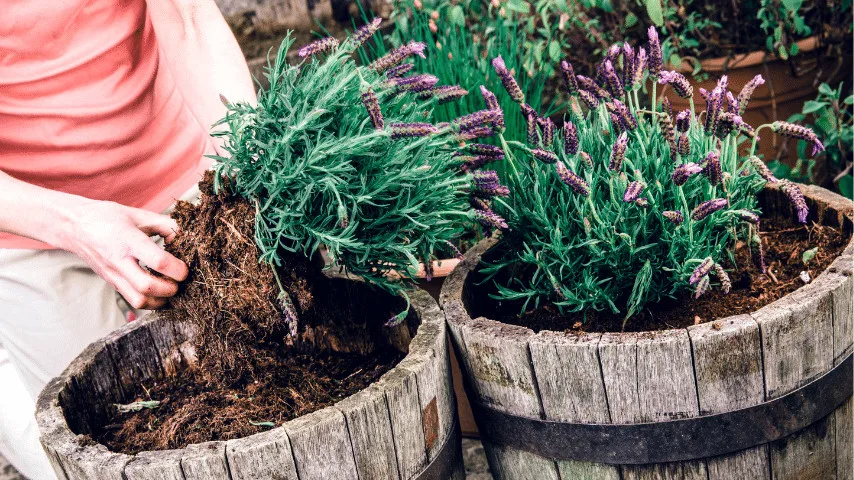
Root rot is literally when the roots of your lavender plant
3. Cut back the frost-damaged plant
Lavender plants prefer to grow in warm conditions that are generally dry.
This means plenty of sun in summer and winters that are mild.
The optimum temperatures for the plants are between 66 °F and 68 °F (20 °C and 30 °C).
In cooler areas, lavender plants can become damaged by frost.
You must remove all the dead upper stems and leaves, which will encourage the plant to grow from the base again.
4. Move the dying plant into the sun
Lavender plants require at least 6 hours of direct sunlight throughout the spring and summer months to thrive.
They can be stunted in the shade and may develop root rot.
If you have a lavender plant growing in the shade that is beginning to die, you must move it into the full sun as soon as possible.
5. Repot lavender plants growing in small pots
A lavender pot that is growing in a pot that it has outgrown can begin to wither and die.
This is because the roots are taking over the soil and can no longer absorb enough nutrients, or the roots have become waterlogged.
To revive the lavender plant in both these cases, you need to transplant the plant into a bigger pot that will drain well.
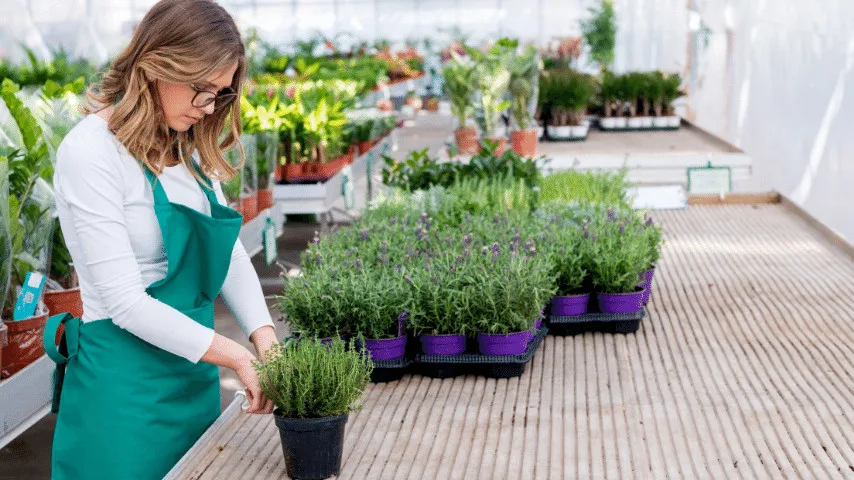
Lavender pot that is growing in a pot that it has outgrown can begin to wither and die
6. Leggy growth
Lavender prefers soils that are not particularly fertile, as their natural growing conditions are in sandy soil.
If they are planted in richer soils, they will grow more quickly and become very leggy.
They are also likely to develop yellow leaves and produce fewer flowers.
To revive a lavender plant that has become too leggy, if you are using fertilizer or compost, then stop immediately.
Cut back the long shoots to encourage growth from the bottom. Transplant the plant, or add sand or gravel to the soil.
7. Prune woody lavender severely and encourage lower growth
A lavender plant that is allowed to grow wild without being tamed might become woody.
The stems of the plant will grow very long and not bear many leaves and flowers.
They will eventually move apart from each other and the plant will effectively gape. Ultimately, the plant will collapse.
To rescue a lavender plant that has become very woody, you will need to prune it quite severely.
Cut away the older, woody stems and encourage growth from the bottom.
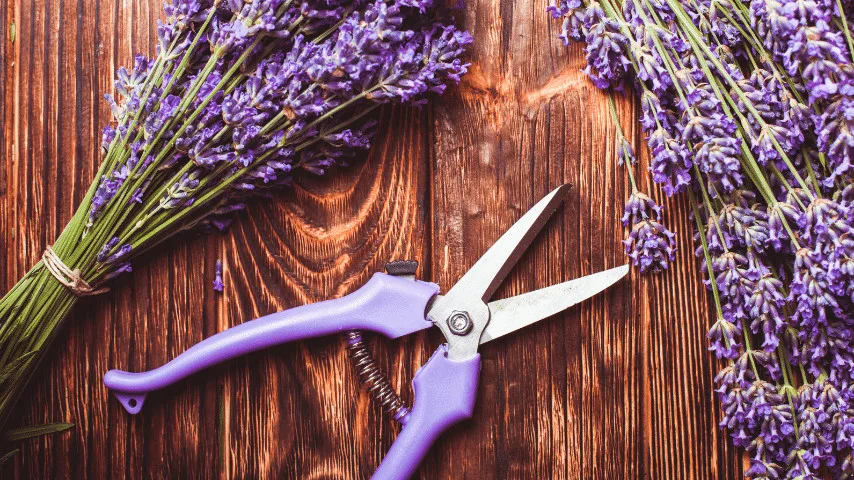
Prune woody lavender severely
8. Move the plant to a drier place
Lavender occurs naturally in a dry climate, so you must always monitor the level of humidity where your lavender plant is growing.
If the humidity is high, the plant may begin to wilt and the leaves turn brown.
The remedy for this damage is to move the plant into a drier area if it’s growing in a pot.
If the plant is in the ground, you can thin it out by pruning the outer foliage quite severely.
If there are a few plants together, you may need to remove some of them to encourage airflow.
This will assist to limit the quantity of water taken in by the plants from the atmosphere.
9. Treat the lavender plants for bugs
The four-lined plant bug is attracted to lavender plants and can cause damage. Both the adults and nymphs can affect the plants.
The damage takes the form of dark, sunken spots on the leaves, which develop into holes.
The plants can also begin to wilt and the leaves turn brown.
To treat the bugs and revive your plants, in autumn you should take out any plants that have been damaged.
During the growing season, washing the plants with insecticidal soap can get rid of the eggs, nymphs, and adults.
You may need to repeat the treatment.
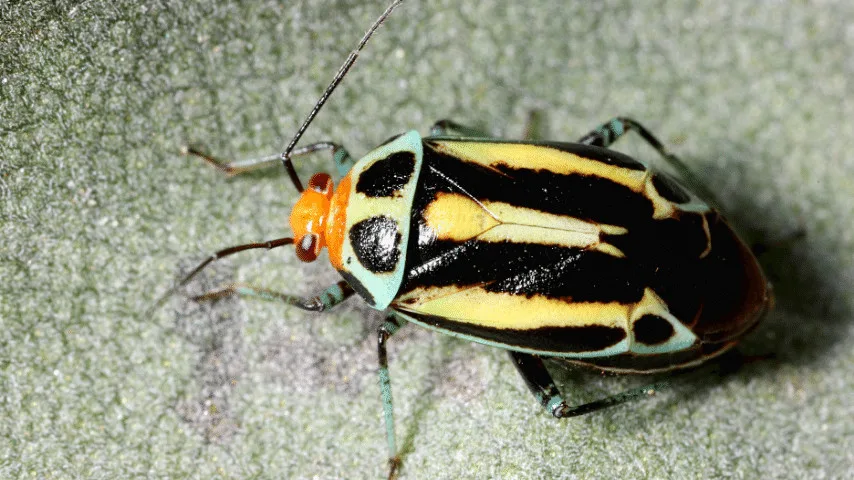
Four-lined plant bug is attracted to lavender plants
10. Treat Septoria leaf spot
The fungus Septoria Lavandula causes a leaf spot on lavender plants. It can be seen in small grey spots on the older leaves.
They spread and the leaves will eventually drop off. The plant’s growth will also be stunted.
Septoria thrives in humid and wet conditions, so the first treatment the lavender plant needs is to be put in a warmer, sunnier spot to dry off.
If you are unable to relocate the plant, consider increasing the air circulation around it. You can also treat the plant with a fungicide.
Frequently Asked Questions About How to Revive a Dying Lavender Plant
Can my lavender plant be revived if it is dying from root rot?
Root rot is a condition of the roots that can be treated, so you can revive a lavender plant that’s dying as a result of it.
Repot the plant after removing it from its pot and cutting out the decaying roots.
Conclusion On How to Revive a Dying Lavender Plant
If your lavender plant is dying, you don’t have to give up on it.
Use one of these hints to treat it and it will certainly revive and grow healthily again.

Daniel has been a plant enthusiast for over 20 years. He owns hundreds of houseplants and prepares for the chili growing seasons yearly with great anticipation. His favorite plants are plant species in the Araceae family, such as Monstera, Philodendron, and Anthurium. He also loves gardening and is growing hot peppers, tomatoes, and many more vegetables.

